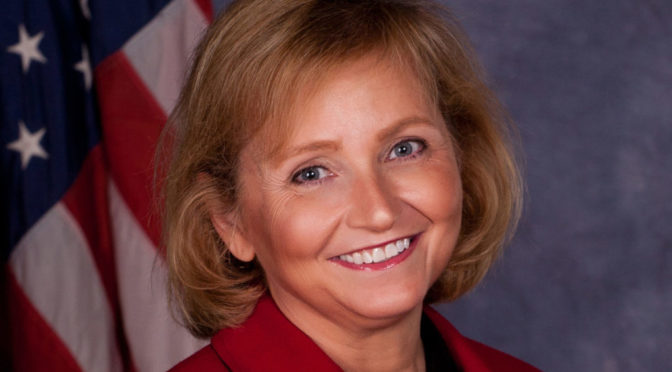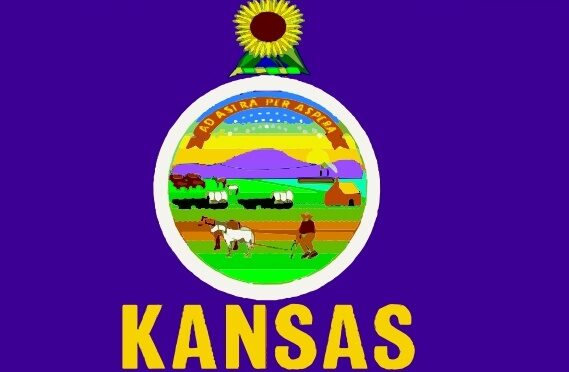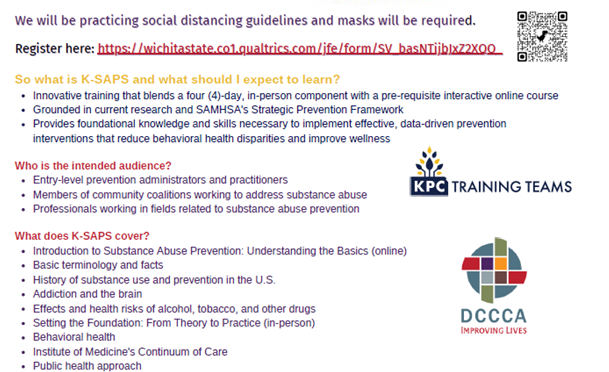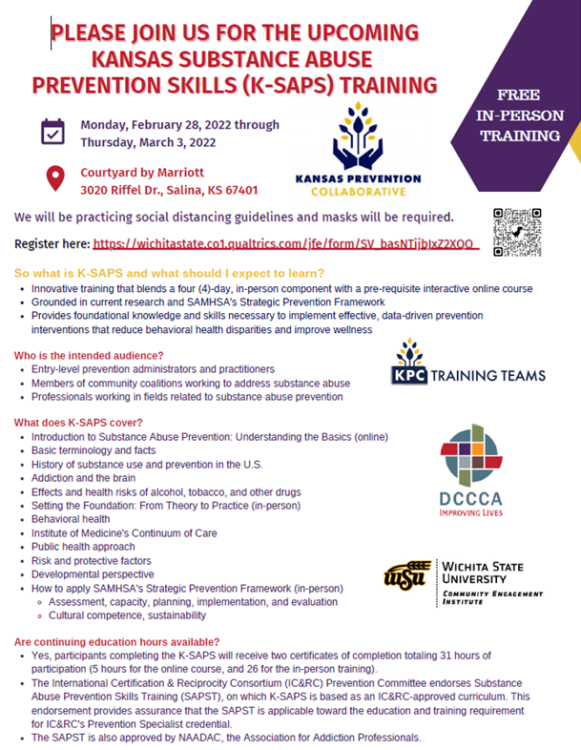Governor Laura Kelly Announces Medicaid Expansion Bill to Boost Kansas’ Economy, Increase Access to Care
TOPEKA – Governor Laura Kelly announced legislation to expand Medicaid (KanCare), a law that would provide more than 150,000 hard-working Kansans access to affordable healthcare and create more than 23,000 new jobs, bolstering the Kansas economy.
“Expanding Medicaid so that thousands of hard-working Kansans have access to affordable health care would boost the Kansas economy,” Governor Laura Kelly said. “Expansion would inject billions of dollars into our state, create thousands of jobs, help retain our healthcare workers in Kansas –and help rural hospitals’ bottom lines. It’s time to work together to deliver for Kansans and get this done once and for all.”
Under the proposed legislation introduced on February 9, Medicaid will be expanded to cover Kansans earning up to the full 138 percent of the Federal Poverty Level, 90 percent of which would be paid by the federal government, starting on January 1, 2023. Furthermore, if Medicaid is expanded, the state is poised to receive an additional $370 million over the next eight fiscal quarters for the current Medicaid population. That’s a total of $68.5 million in State General Fund savings in Fiscal Year 2023 alone, which will be reallocated for one-time strategic investments on housing, childcare, and workforce development.
A 2022 statewide survey finds that almost 8 in 10 Kansans – 78 percent – support expanding Medicaid to allow more Kansans to qualify for health care coverage. This is not only the right thing to do for our state, but it’s incredibly popular among Democrats, Independents, and Republicans alike.
Expanding Medicaid in Kansas would boost the economy by:
- Providing affordable health insurance to hundreds of thousands of Kansans
- Stimulate the economy for rural, suburban, and urban communities alike
- Create tens of thousands of new jobs
- Inject billions of dollars in increased economic output
- Retain health care jobs in Kansas
The bill requires the Secretary of Health and Environment to collect information from applicants regarding their employment history through the Medicaid application and refer unemployed or underemployed individuals to the Department of Commerce or Department for Children and Families to assist with locating job opportunities through work referral programs.
Here’s what Kansas leaders are saying:
“After pushing to continue the federal match for states that expand Medicaid—and fighting to increase it twice—I’m glad to join Governor Kelly and hundreds of thousands of Kansans in a renewed effort to deliver this much-needed expansion. We cannot continue to leave Kansans out in the cold. It’s time to bring these federal dollars back to our state, expand Medicaid, and boost our state economy along with it.” – United States Representative Sharice Davids (KS-03)
“The list of reasons to expand Medicaid grows with every year we refuse to do so. This wildly popular policy will ensure we have a healthy workforce, create jobs, and attract businesses. More importantly, it will allow our fellow Kansans to flourish and participate fully in our state, which brings prosperity for all of us. The first best time to expand Medicaid was in 2014. The next best time is now.” – Senate Democratic Leader Dinah Sykes
“Expanding Medicaid is enormously popular among Kansas and addresses many issues facing the state. First and foremost, it is a pro-business, pro-growth policy. Throughout the legislative session, people repeatedly ask what we can do to keep our college graduates in the state and bring in outside business investment. Medicaid expansion is a clear solution with bipartisan voter support. It’s past time to embrace this common-sense policy.” – House Democratic Leader Tom Sawyer
“Medicaid expansion would benefit an estimated additional 120,000 to 165,000 Kansans, some of which are people living with disabilities. What facts tell us is that folks living with disabilities are more likely to be employed in states where there is expanded Medicaid coverage. Having access to health insurance is one tool that allows Kansans living with disabilities to be lifted out of poverty, because it relieves the very real stress of worrying about when the next healthcare bill will hit. Those living with disabilities are often confined to poverty because earnings have been too high to be deemed eligible for Medicaid, yet those who surpass income limitations still cannot afford health insurance on their own. This is a Kansan issue, not a partisan issue.” -Lynn Rogers, Kansas State Treasurer
“The Greater Kansas City Chamber of Commerce has long advocated for Medicaid Expansion in the State of Kansas. It is too important to our businesses, our hospitals, and every taxpayer in Kansas. New data shows Medicaid Expansion will bring more than 2,800 jobs in the Greater Kansas City region alone, and an estimated economic impact of nearly $125 million. The State of Kansas has an opportunity to recapture federal funds that can help create jobs, advance economic growth, and most importantly improve the health of all Kansans.” –Joe Reardon, President & CEO, The Greater Kansas City Chamber of Commerce
“Rising healthcare costs are impacting businesses and individual Kansans alike; adding to the burden is that the costs of uninsured, low-income Kansans are being passed on to companies and everyone else in the system. Therefore, we must implement solutions that expand affordable coverage to all Kansans to improve the health of our families and control the cost of care for our employees, families, and businesses.” – Tracey Osborne Oltjen, President & CEO, Overland Park Chamber of Commerce
“Kansas hospitals continue to strive to maintain a dedicated and innovative workforce. As surrounding states implement expansion, Kansas could experience a disadvantage as our neighboring states may have additional resources to recruit health care staff away from our state. This would exacerbate an already challenging problem for Kansas hospitals and health care providers. KanCare expansion is a critical issue to level the playing field for the Kansas health care industry.” — Chad Austin, President and CEO of the Kansas Hospital Association
“The Alliance for a Healthy Kansas commends the introduction of legislation enacting KanCare expansion. We know that Kansans are feeling the rising costs of everyday life, and health care is no exception. Expansion helps low-wage parents stay healthy and reduces health care costs for everyone. It protects Kansans from medical debt by fixing eligibility limits for KanCare that are currently too low. It preserves and strengthens rural health care and makes Kansas more economically competitive with our neighboring states that have all expanded their Medicaid programs. Kansans are tired of waiting for a long-term solution for the health care coverage gap. It is time to enact KanCare expansion or we will all keep paying the price.” – April Holman, Executive Director, Alliance for a Healthy Kansas
“A sustainable health system is crucial to the future of rural Kansas communities. High uninsured rates and hospitals facing high levels of uncompensated care threaten the future of health care. Expanding KanCare would help protect the 70 rural hospitals currently at risk of closing across our state. Expanding KanCare would strengthen the rural health care system and help ensure rural Kansans get the health care they need while giving a boost to their economies. The time to expand is now.” – David Jordan, President and CEO of United Methodist Health Ministry Fund
“New Kansas-specific economic data indicate our health care costs are outstripping those in other states, including other non-expansion states. A recent voter survey showed 8 in 10 Kansans are concerned about the costs of health care – and want a long-term solution. They also understand current income eligibility is too low – less than $4 an hour for a family of three, or $8,350 a year. Kansas voters want lawmakers to expand Medicaid and leverage this fiscally responsible option now.” – Brenda Sharpe, President and CEO, REACH Healthcare Foundation
“Health Forward is dedicated to ensuring equitable access to high-quality health care. We fully support Gov. Kelly’s plan to expand KanCare so people living on lower incomes live healthier and more economically secure lives. ” Expanding KanCare will bring the cost of health care down for everyone. The inability of Kansans to afford health coverage means more in ER bills, increased uncompensated care for hospitals, and untreated mental and physical health needs. This means individuals, families, and businesses all end up paying more for health care. – McClain Bryant Macklin, Director of Policy and Strategic Initiatives, Health Forward
“We’re encouraged to see the introduction of Medicaid Expansion bills, especially as data indicates that Communities of Color are far more likely to be uninsured – and expansion narrows racial disparities in health care coverage and improves health outcomes and access to preventable services for diseases that disproportionately impact People of Color.” – Teresa Miller, President and CEO, Kansas Health Foundation



 FOR IMMEDIATE RELEASE:
FOR IMMEDIATE RELEASE:


